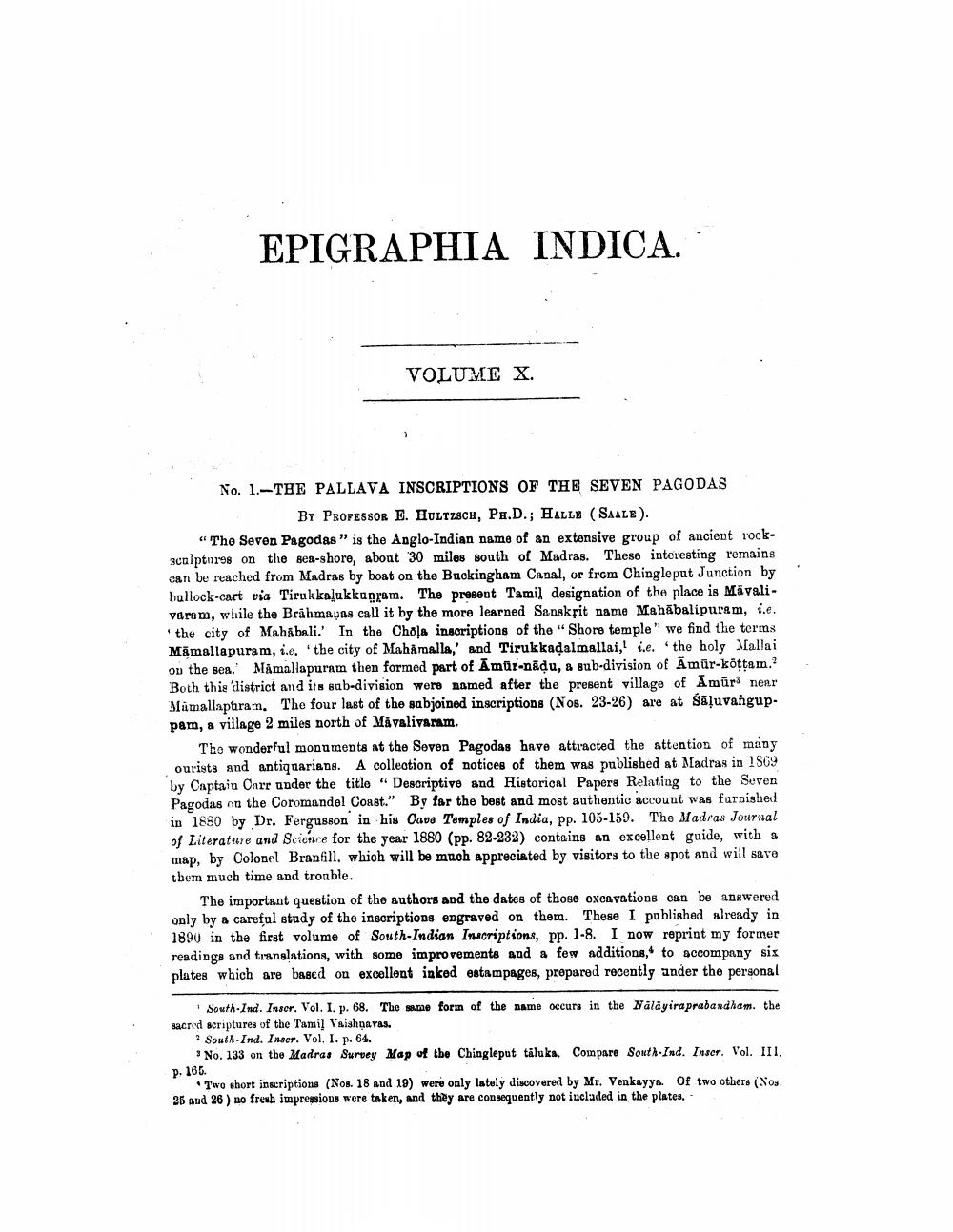________________
EPIGRAPHIA INDICA.
VOLUME X.
No. 1.-THE PALLAVA INSCRIPTIONS OF THE SEVEN PAGODAS
BY PROFESSOR E. HULTZSCH, PH.D.; HALLE (SAALE).
"The Seven Pagodas" is the Anglo-Indian name of an extensive group of ancient rocksculptures on the sea-shore, about 30 miles south of Madras. These interesting remains can be reached from Madras by boat on the Buckingham Canal, or from Chingleput Junction by bullock-cart via Tirukkalukkanram. The present Tamil designation of the place is Mävalivaram, while the Brahmapas call it by the more learned Sanskrit name Mahabalipuram, i.e. the city of Mahabali.' In the Chola inscriptions of the "Shore temple" we find the terms Mamallapuram, i.e. the city of Mahamalla,' and Tirukkaḍalmallai, .e. the holy Mallai on the sea. Mamallapuram then formed part of Amur-naḍu, a sub-division of Amür-kōṭṭam.2 Both this 'district and its sub-division were named after the present village of Amur3 near Mamallapuram. The four last of the subjoined inscriptions (Nos. 23-26) are at Saluvanguppam, a village 2 miles north of Mavalivaram.
The wonderful monuments at the Seven Pagodas have attracted the attention of many ourists and antiquarians. A collection of notices of them was published at Madras in 1869 by Captain Carr under the title "Descriptive and Historical Papers Relating to the Seven Pagodas on the Coromandel Coast." By far the best and most authentic account was furnished in 1880 by Dr. Fergusson in his Cave Temples of India, pp. 105-159. The Madras Journal of Literature and Science for the year 1880 (pp. 82-232) contains an excellent guide, with a map, by Colonel Branfill, which will be much appreciated by visitors to the spot and will save them much time and trouble.
The important question of the authors and the dates of those excavations can be answered only by a careful study of the inscriptions engraved on them. These I published already in 1890 in the first volume of South-Indian Inscriptions, pp. 1-8. I now reprint my former readings and translations, with some improvements and a few additions, to accompany six plates which are based on excellent inked estampages, prepared recently under the personal
South-Ind. Inser. Vol. I. p. 68. The same form of the name occurs in the Näläyiraprabandham. the sacred scriptures of the Tamil Vaishnavas.
2 South-Ind. Inser. Vol. I. p. 64.
No. 133 on the Madras Survey Map of the Chingleput täluka. Compare South-Ind. Inser. Vol. III.
p. 165.
Two short inscriptions (Nos. 18 and 19) were only lately discovered by Mr. Venkayya. Of two others (Nos 25 and 26) no fresh impressions were taken, and they are consequently not included in the plates.




